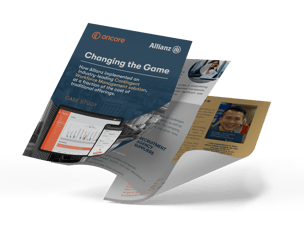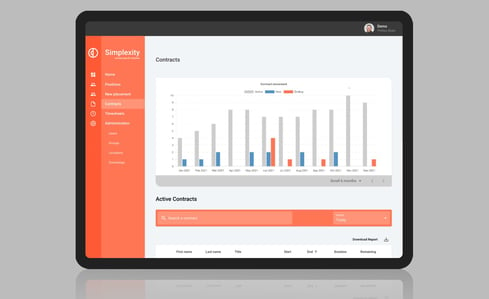The job market across the Australian and New Zealand region has undergone significant shifts in recent years, as the impact of the COVID era continues to be felt. This, coupled with advancing technologies, a rising trend of global talent sourcing, and companies investing in major L&D drives, gives you a clear snapshot of what to expect in 2024.
The workforce trends that shaped the Australian and New Zealand marketplaces in 2023 are both surprising and predictable.
From worker’s desire for more hybrid working opportunities to employers looking to bring their people back to the office, the sometimes-competing nature of how we work has become seemingly widespread.
Many workforce trends posed challenges throughout the A/NZ region in 2023. Some of these challenges included:
- The increased flexibility in work arrangements has heightened data security issues for companies, underlining the importance of safeguarding customer and employee data. This has necessitated a transition to cloud-based systems. However, companies must reinforce the hardware used to access these systems and establish protocols for downloading apps and web-based tools.
- Talent retention emerged as a significant hurdle for organisations in A/NZ in 2023. Despite economic constraints, highly skilled workers showed a willingness to transition to companies offering better opportunities, remuneration, and flexibility. The failure to align compensation, benefits, and soft value-adds such as company values and well-being initiatives caused top employees to seek opportunities elsewhere.
- Upskilling workers proved to be a challenge in 2023 due to the ongoing technological evolution in the workplace, encompassing AI, robotics, quantum computing, and cloud-based collaborations. This challenge was compounded by worker resistance to change, leaving HR leaders with surplus skills that may not align with evolving business needs.
Looking ahead to 2024, the upcoming trends for the region remain centred around distributed workforces, advancements in technology, and the ongoing effort to address talent shortages. Here's what you can anticipate in 2024.
Overseas Hiring and Market Expansion
Employers will continue to seek the best white-collar workers, irrespective of location, for global expansion, and to test new markets. In 2024, the top roles A/NZ companies will be hiring overseas talent for, include:
- Software Engineers
- Software Developers
- Customer Support Specialists
- Sales and Business Development Professionals
- Content Editors
The most popular countries that companies in Australia and New Zealand have been hiring from are:
- The Philippines
- The USA
- India
- Brazil
- The UK
- African Nations
Upskilling and Training in 2024
Employers in A/NZ will continue to ramp up investments in the training and development of their workers in 2024. Skill shortages in key job families are the main drivers, as well as the need for employers to boost technology proficiency and the related expertise of their workers. According to the World Economic Forum’s The Future of Jobs Report 2023, there will be a 44% disruption of skills in the next five years. The report further suggests that reskilling and upskilling will be two of the dominant core focuses of Learning and Development (L&D) in the coming years.
AI Integration in Onboarding
The process of onboarding holds significant influence over an employee's journey within a company. With the integration of artificial intelligence (AI) and data analytics, onboarding is currently undergoing a transformation that could revolutionise the process through personalisation and process enhancement. AI has the potential to foster a sense of belonging from the outset and ultimately optimise onboarding efficiency and outcomes. The advantages of utilising AI for onboarding encompass improved worker engagement, increased retention rates, and bolstered corporate reputation.
Some of the tasks now managed by AI during onboarding include:
- Generating and managing paperwork digitally.
- Automatically sending messages to employees throughout their onboarding period.
- Utilising chatbots to collect feedback from new hires and address initial inquiries.
- Analysing the performance and progress of new employees.
Seizing Fresh Opportunities: Strategic Planning for 2024
Reflecting on the past year and considering the anticipated trends of 2024, your business must embrace these opportunities for your workforce, if not already done so. Failure to adapt to market influences and technological advancements will result in lagging productivity and talent shortages for HR teams. From technology adoption to training initiatives, from global recruitment strategies to managing remote workforces, the emerging trends in 2024 present ample opportunities.
However, seizing these opportunities requires strategic planning and foresight. According to Gartner, only 32% of HR leaders have fully integrated their strategic planning processes with their business counterparts. Therefore, businesses must undertake strategic planning to navigate the evolving job market in A/NZ throughout 2024 effectively.
Here are some actionable steps to consider:
- Understand your organisation's goals and strategic roadmap.
Align your HR strategy with the organisation's objectives and business goals to drive better outcomes and support HR initiatives. Collaboration with senior business leaders is essential to grasp how business priorities influence HR functions.
- Identify future capabilities and required skills.
Engage in discussions with business leaders to assess the impact of organisational goals on workforce requirements. Understanding how strategy affects different business units helps HR leaders anticipate future HR needs.
- Evaluate existing capabilities and skills.
Assess the organisation's current talent pool to identify gaps between present and future requirements, facilitating talent planning aligned with the organisational strategy.
- Develop HR goals and establish criteria for success.
Prioritise HR goals that align with the organisation's strategy and define long-term success for the HR function.
- Communicate your HR strategy effectively.
Craft a clear and concise statement outlining HR objectives for the upcoming year, tailored to different stakeholder groups, to guide decision-making among departmental leaders.












_11zon%20(1).jpg?width=302&height=124&name=linkedin-sales-solutions-vqWWOnA6--M-unsplash%20(2)_11zon%20(1).jpg)






-2.png?width=300&name=Contractor%20(4)-2.png)